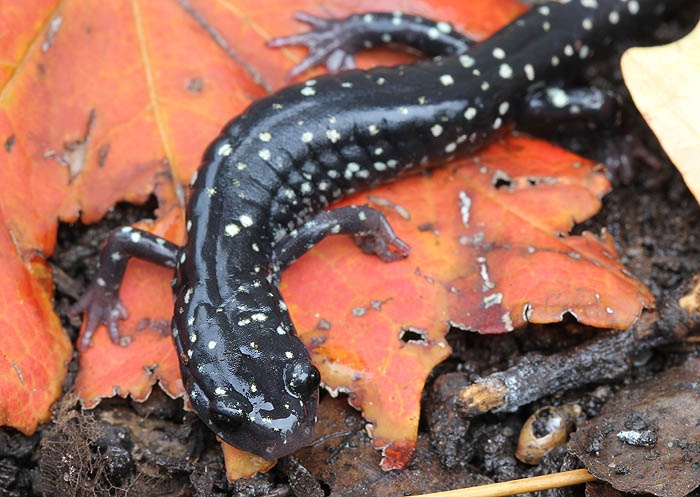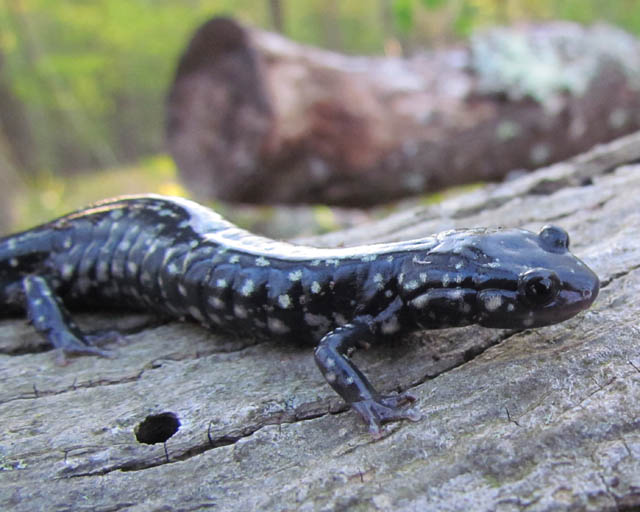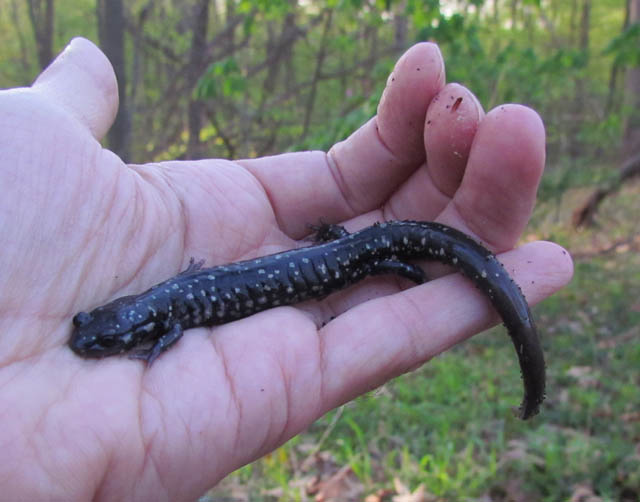There are several common ways a small and relatively defenseless animal might avoid being eaten by predators. One method might be blending in with the surrounding environment, thereby avoiding detection. Another tactic would be the ability to make a fast escape. Still another strategy to not be eaten is to be poisonous, or at the very least, distasteful. The Slimy Salamander, however, employs none of these techniques.
This amphibian might be better named if it were called the “Sticky Salamander,” because it secretes a glue-like substance from its skin when threatened. This substance can be very difficult to remove from hands or clothing. It prevents the animal from being eaten by some predators. It’s scientific species name glutinosus is the Latin adjective “sticky.”
The relatively cool, wet Summer we’ve been experiencing has made for ideal conditions to come across this woodland salamander and I’ve seen a few over the past several weeks. This attractive amphibian is black with a scattering of small silvery-white flecks all over it. The amount of flecking can vary among individuals; flecks may be absent on some and plentiful on others.
The Northern Slimy Salamander is found throughout much of the northeastern United States. Though slender, it is relatively long, reaching total lengths of over 7 inches. It likes to hide under rotting logs or in stumps. Although entirely land-dwelling, it needs a damp habitat. It is a lungless salamander, so wet conditions are essential, because it breathes through its moist skin.
The Slimy Salamander emerges from its burrow at dusk and retreats at dawn. It hunts insects and other small invertebrates and catches food by flicking out its tongue. It is occasionally active on rainy days. Not only is it good looking, but the Slimy Salamander is also a true original when it comes to defending itself.





